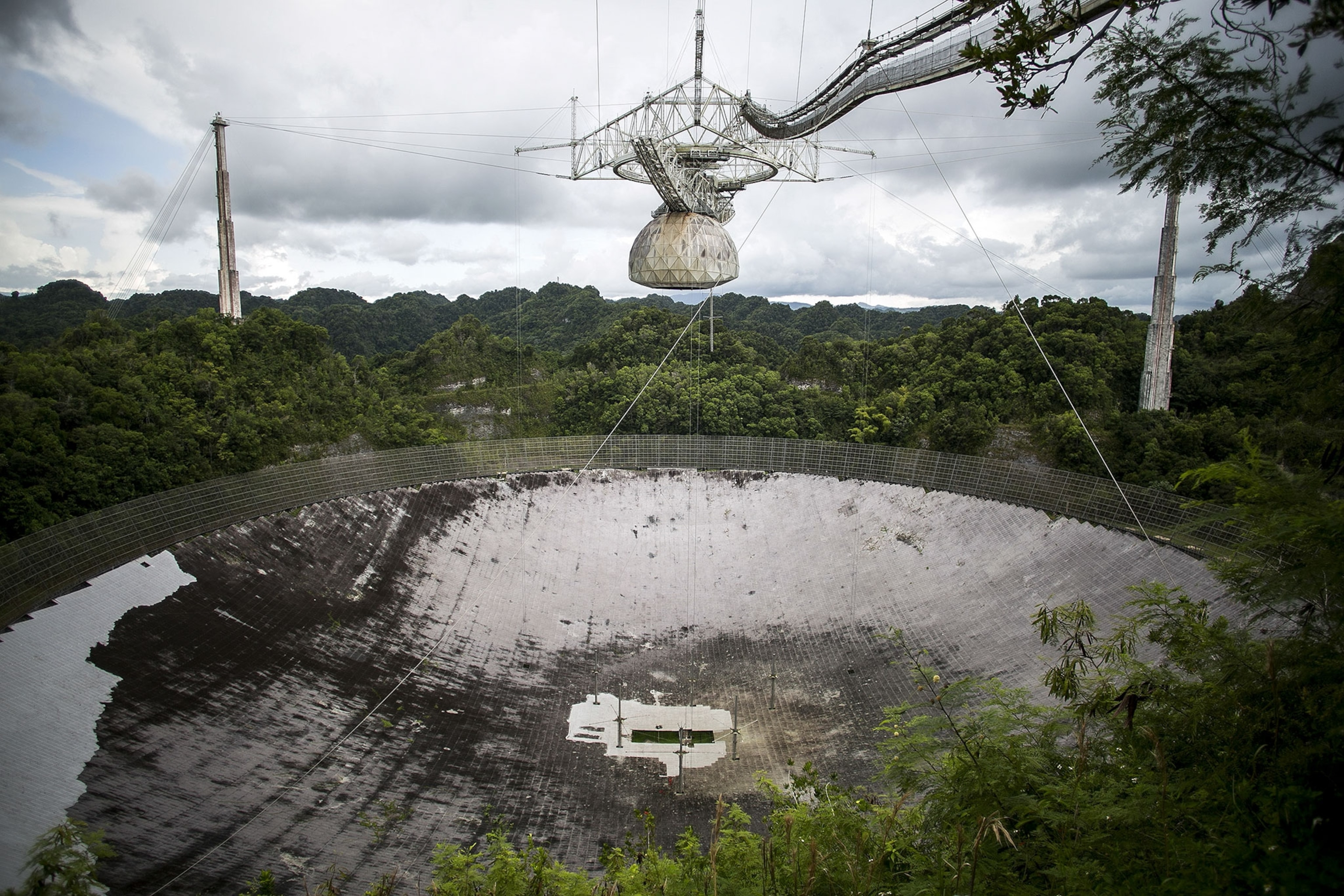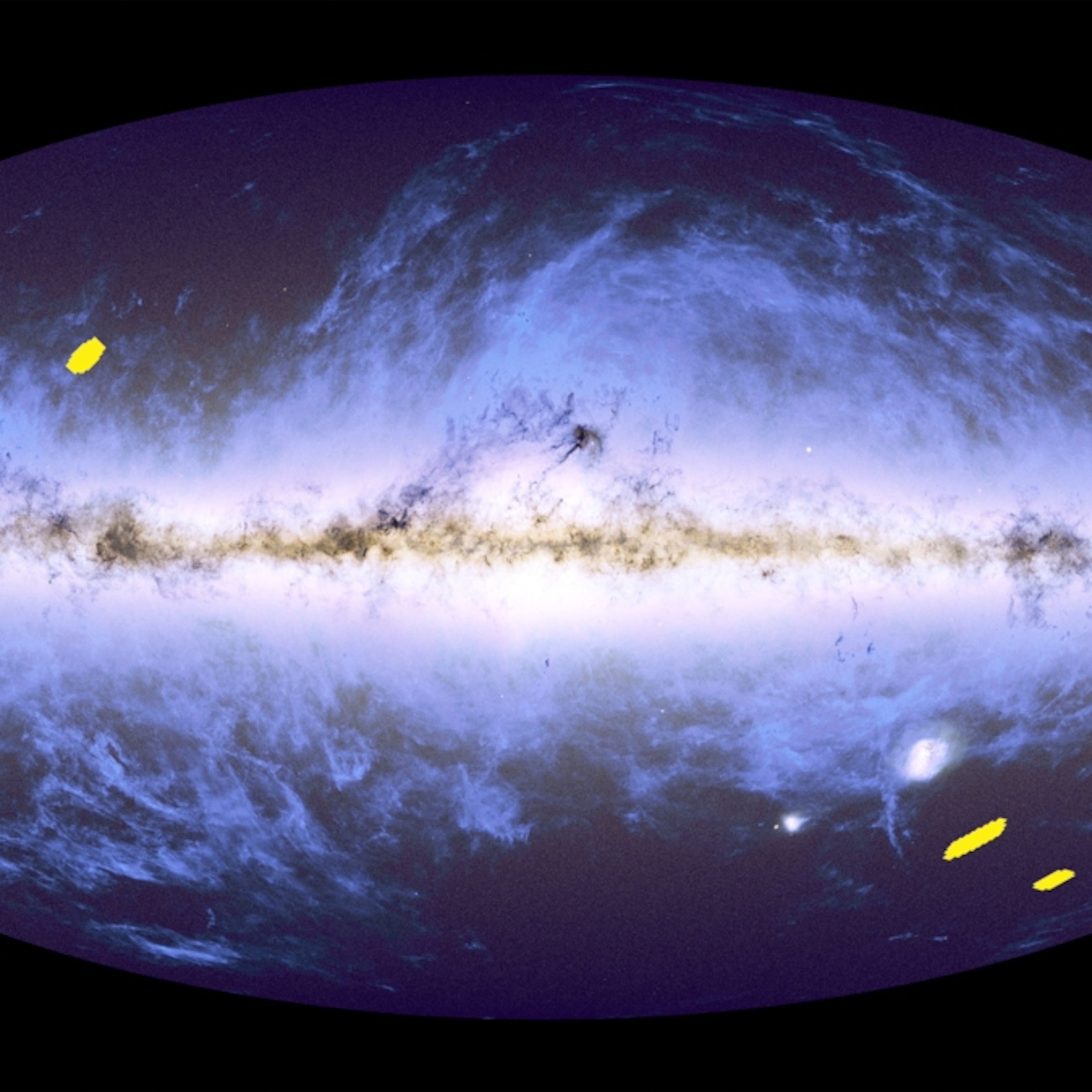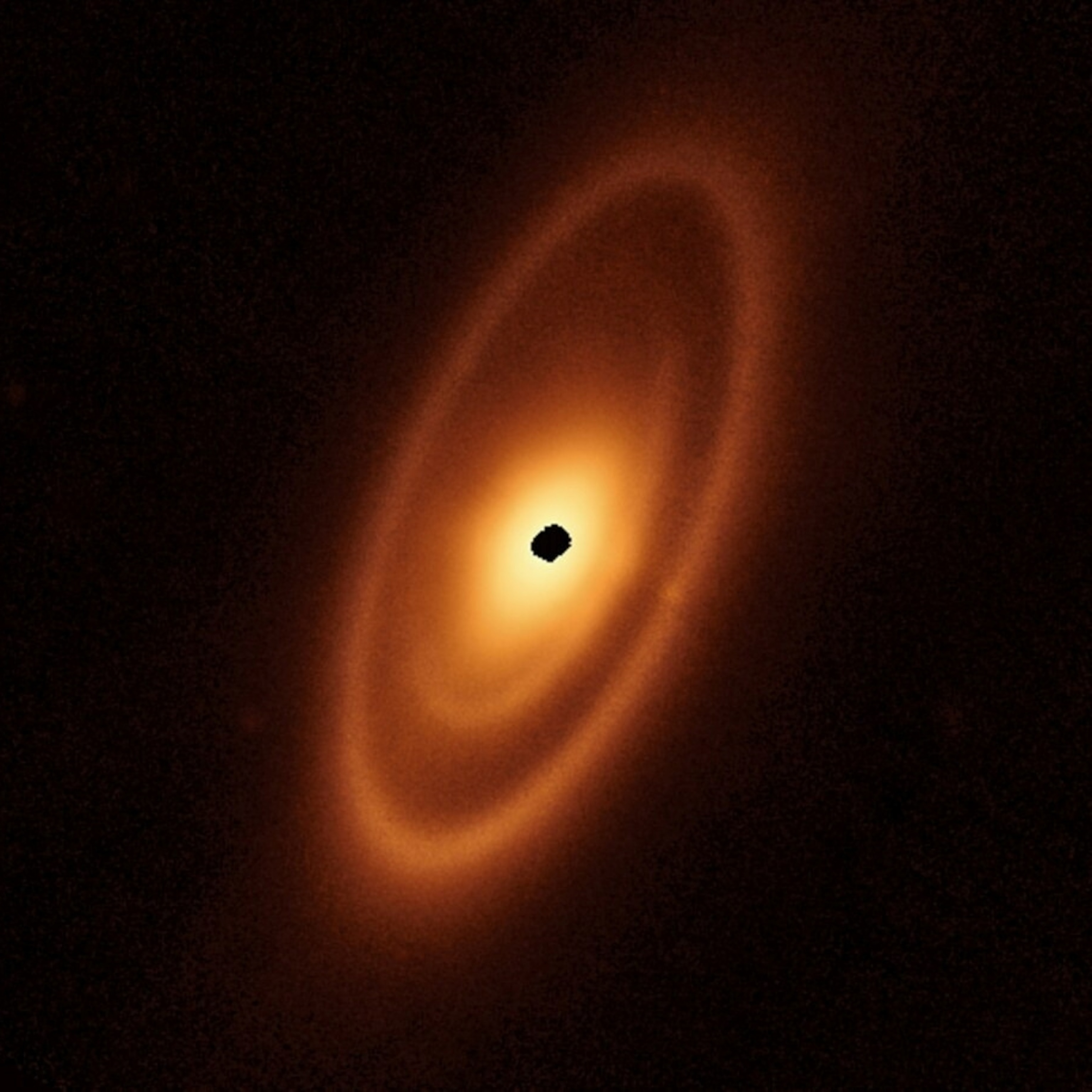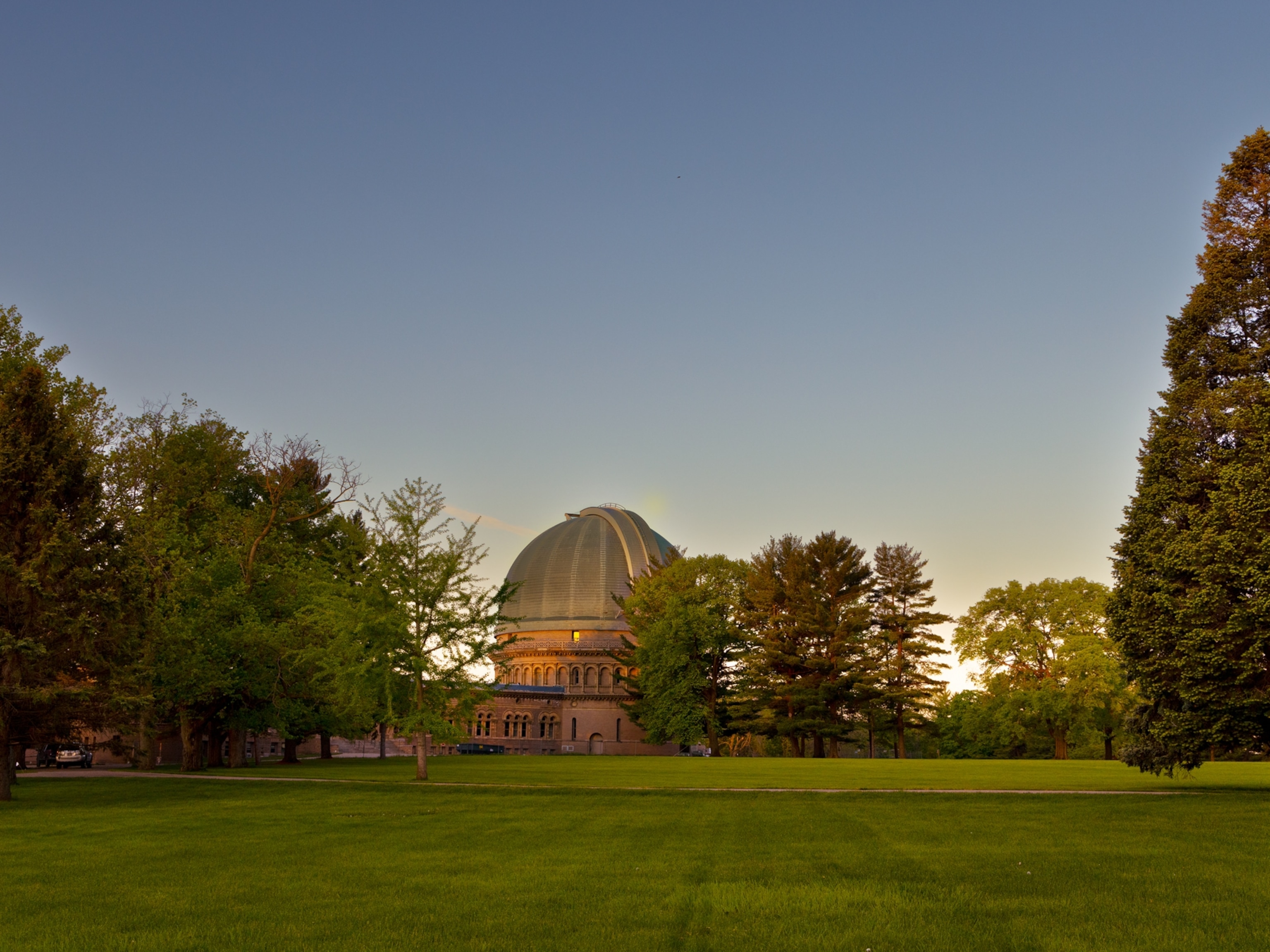
Hurricane Damages Giant Radio Telescope—Why It Matters
Staff at the Arecibo Observatory in Puerto Rico are safe, but the storm destroyed a key instrument, and conditions in surrounding towns are still unknown.
Scientists and ham radio operators have confirmed that the Arecibo Observatory in Puerto Rico—arguably the world’s most iconic radio telescope, which has a dish stretching a thousand feet across—has come through Hurricane Maria mostly intact, but with some significant damage.
More importantly, the observatory’s staff sheltering on-site are safe, and the facility is in good enough condition to potentially serve as a local center for the U.S. Federal Emergency Management Agency, or FEMA, reports Arecibo deputy director Joan Schmelz.
Because of its deep water well and generator, the observatory has been a place for those in nearby towns to gather, shower, and cook after past hurricanes. It also has an on-site helicopter landing pad, so making sure the facility is safe in general is not just of scientific importance, but is also relevant for local relief efforts.
News about the facility has been primarily coming from Arecibo telescope operator Ángel Vazquez, who managed to get to the site and start communicating via short-wave radio in the early evening of September 21.
According to initial reports, the hurricane damaged a smaller, 12-meter dish and it caused substantial damage to the main dish, including about 20 surface tiles that were knocked loose. (Find out why this hurricane season has been so catastrophic.)
Also because of the storm, a 96-foot line feed antenna—which helps focus, receive, and transmit radio waves—broke in half and fell about 500 feet into the huge dish below, puncturing it in several places, says Pennsylvania State University’s Jim Breakall, who talked with Vazquez.
A fixture of the observatory since 1966, that line feed weighs about ten thousand pounds and is easily visible in images of the telescope as the pointy thing hanging off the platform. It was once used to detect mountains on the surface of Venus, and it is still crucial for studies of the part of Earth's atmosphere called the ionosphere, says former observatory director Frank Drake, who is also my dad.
“It allows the Arecibo telescope to achieve the most sensitivity of any radar telescope in the world,” Drake says, noting that it’s not clear how much time or money could be needed for repairs. “The end result is that the telescope will not be fully operative for some time at all wavelengths.”
Radio Quiet
On September 20, Hurricane Maria came ashore as a Category 4 storm and traversed Puerto Rico, flooding towns, toppling bridges, demolishing buildings and blasting the island with winds exceeding 150 miles an hour.
Even now, nearly 48 hours after Maria went through, reports from many parts of the island are devastatingly sparse. Electricity is nonexistent, phone lines are mostly down, and roads are blocked, complicating both communications and rescue operations.
As it exited the island, Maria’s eye passed within miles of the seaside town of Arecibo—and the giant radio telescope, which is nestled in a sinkhole to the south, set among a bubbling landscape of forested mountains.
Arecibo’s staff had begun hurricane preparations at least a day before, but around 11 p.m. on September 19, power and on-site communications went out. A website keeping track of wind speeds went offline, and though staff promised to continue communicating over cell phones for as long as possible, by 8 a.m. the next day, power and phone lines had gone out, too.
Then, there was nothing but eerie silence for more than 24 hours.
Vazquez, who sheltered at home as the storm passed through, was at last able to make it to the observatory via one access road, check in with the staff there, and relay information to anxious colleagues on the mainland.
“Great news! [Princeton University professor] Joe Taylor talked to Angel Vazquez, who made contact with the observatory via ham radio. Everybody there is safe and sound,” Schmelz reported.
However, it’s not yet clear how staff who weathered the storm in town are doing, or what conditions are like for local communities. Reports suggest that the road up to the facility is covered in debris and is largely inaccessible.
Still, according to the National Science Foundation, which funds the majority of the telescope’s operations, the observatory is well stocked with food, well water, and fuel for generators. As of Thursday night, there are enough supplies for the staff hunkered down there to survive for at least a week, although Vazquez reports that it’s not clear how long the generators will be working.
“As soon as the roads are physically passable, a team will try to get up to the observatory,” the NSF statement says.
Stellar Science
Built in 1963, the Arecibo Observatory has become a cultural icon, known both for its size and for its science. For most of its 54-year existence, Arecibo was the largest radio telescope in the world, but in 2016, a Chinese telescope called FAST—with a dish measuring 1,600 feet across—surpassed Arecibo in size, although it’s not yet fully operational.
The observatory was originally designed for national defense during the Cold War, when the U.S. wanted to see if it could detect Soviet satellites (and maybe missiles and bombs) based on how they alter the portion of Earth’s atmosphere called the ionosphere. Later, the telescope became instrumental in the search for extraterrestrial intelligence (SETI) programs and in other aspects of radio astronomy.
Here are some of the significant science highlights from the Arecibo Observatory over the years.
- In 1964, astronomers used the telescope to determine the planet Mercury’s rotation period, which proved to be much more complex than imagined.
- In 1974, the telescope provided the first indirect observation of gravitational waves, ripples in the fabric of spacetime, which in that case were produced by a pair of pulsars orbiting one another. The observation earned Joe Taylor the 1993 Nobel prize in physics.
- Also in 1974, SETI astronomer Frank Drake (my dad) beamed the “Arecibo Message” toward a star cluster in the constellation Hercules.
- The first detection of planets outside our solar system came in 1992, when Alex Wolszczan used the telescope to find these alien worlds orbiting a pulsar.
- In 2014, astronomers at the observatory detected the first fast radio burst spotted from the Northern Hemisphere. Subsequent observations revealed repeating blasts of radio waves from the same source, an oddity that may help astronomers understand the origins of these mysterious cosmic events.
- The telescope continues to participate in numerous searches for radio signals from extraterrestrial civilizations as part of various SETI programs—including UC Berkeley’s popular SETI@home project.
- Arecibo continues to help characterize potentially dangerous asteroids that cross Earth’s orbit.
- Current work at the facility also monitors an array of pulsars in an attempt detect more gravitational waves, this time produced by colliding supermassive black holes.
- In addition to its scientific value, the Arecibo Observatory is a popular tourist destination, and it has been featured in the movies Contact and GoldenEye and the TV show The X-Files, among others. It also provides a much-needed source of income for local communities, who benefit from staff jobs at the facility as well as its tourist draw, which sees more than a hundred thousand visitors come by each year.








